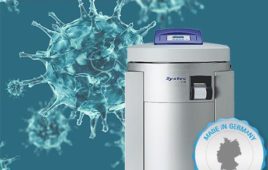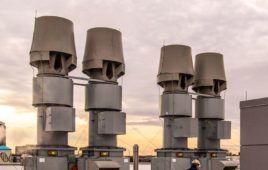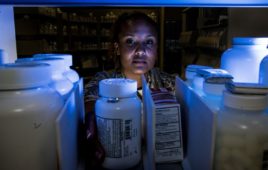The USP (United States Pharmacopeia) was founded in 1820. It is a scientific, nonprofit organization that sets standards for the identity, quality, purity, and strength of medicines, food ingredients, and dietary supplements. The organization’s mission is to improve global health through public standards and related programs that help ensure the quality, safety, and benefit of medicines and foods.
ENTRIES OPEN:
Establish your company as a technology leader. For 50 years, the R&D 100 Awards, widely recognized as the “Oscars of Invention,” have showcased products of technological significance. Learn more.
USP Expert Committees are responsible for developing and revising USP standards that comprise its seven compendia:
- The USP
- The NF
- Medicines Compendium
- USP on Compounding
- Herbal Medicines Compendium
- Dietary Supplements Compendium
- Food Chemical Codex
Various Expert Committees exist for areas such as Microbiology, Compounding, Biological Analysis, and Physical analysis. Expert panels are formed to provide additional expertise on a particular compendia topic.
USP 797 was implemented in 1999 for all compounding pharmacies. In April 2013, an expert panel started a review of USP 797. These experts compiled a 20 page document of recommendations for changes to USP 797. Recently, Gordon Ely, Senior Technical Specialist at WuXi AppTec and President-Emeritus of the Institute of Environmental Science and Technology (IEST) and a member of the Pharmaceutical Compounding Sterile Preparations Expert Panel, presented a webinar summarizing the recommendations from the panel. This article is based on information from the webinar.
USP 797 applies to non-outsourcing pharmacies which are audited by State Pharmacy Boards, whereas the Drug Quality and Security Act (DQSA) authorizes the FDA to audit larger outsourcing pharmacy operations.
Many definitions were changed to clarify their meaning. Definitions related to the environment and classification of cleanroom areas, ante areas, buffer areas and aseptic processing areas were harmonized with other current standards. More information is required to assist the compounding pharmacy with ISO 14644 Cleanroom classifications, cleanroom design and construction. A clearer distinction between cleanrooms and controlled environments and their function was recommended. Both IEST and CETA were consulted for recommendations on building guidelines and specifications such as:
- the HEPA-filtered air must be introduced at the ceiling and not from the mechanical room,
- validation and certification requirements for the various controlled environments,
- clarification of the distinction between monitoring, certification and classification of these areas,
- requirements for leak testing of HEPA filters after installation, and
- requirements for a prevention, response, and recovery plan of the cleanrooms to bring the room back to its operational stage.
Protection of the integrity of the air quality of the different areas was discussed and recommendations to ensure that materials are not brought into these areas that may compromise the integrity of the air quality. A list of items not allowed in the cleanroom was prepared. Clarification of the cleaning requirements for all areas including sterile compounding areas was recommended. Cleaning of these areas is required prior to the beginning and at the end of each work session. Environmental monitoring requirements were clarified that included:
- frequency of environmental monitoring based on scale and number of personnel,
- description of the nature and frequency of testing for viable and nonviable particles,
- viable sampling should be at least monthly, if not more often, based on risk assessment,
- appropriate response to positive results and trending, and
- alignment with USP <1116>.
An update to the “Common Disinfectants” appendix to reflect newer disinfectant and sterilization methodologies was prepared.
Also the type of wipers used in cleaning was clarified. The panel recommended changing the terminology for wipers as “non-linting” to “low-linting”. The IEST Working Group-4 is currently revising IEST-RP-CC004.3, “Evaluating Wiping Materials Used in Cleanrooms and Other Controlled Environments”. In the next revision, the working group comprised of experts from the wiper manufacturing industry, defines low-linting as “Exhibiting few, if any, fibers or other contamination, visible without magnification, that can separate from, or be easily removed from the material in a dry condition.” The members of this working group are standardizing the tests performed on wipers that demonstrate particle shedding.
Recommendations were made to increase the level of personnel training and evaluation of aseptic manipulation skills. Stronger requirements were recommended for “expert” level and an annual written examination for all personnel. Personnel evaluation should be both qualitative (observation of performance of assigned duties) and quantitative (analyzing assigned product to ensure desired potency has been achieved). Personnel Protective apparel and gowning (donning and doffing) procedures for compounding technicians was clarified. Protective apparel must be cleanroom compatible and reusable apparel must be changed daily and laundered so as to be suitable for cleanroom use. Waterless hand scrubs are not appropriate to be put on gloves. Sterile IPA is recommended to be put on gloves to sanitize the gloves. A gowning and gloving competency audit should be performed initially and then annually.
Recommendations for the verification of compounding accuracy and sterility included specification of storage time and place for sterilized glassware and devices. It was recommended that this area be harmonized with the Microbiology Expert Committee’s depyrogenation chapter <1228>. Products that are not compatible with moist heat (steam) sterilization, it was recommended to sterilize via filtration or produce the product via aseptic processing. Further clarification of aseptic processing versus terminal sterilization was also recommended. Revision of requirements for the media-fill test to be aligned with ISO 13408-1 was also recommended. Additional guidance was provided for sterility testing on smaller batches and volumes. General guidance for assigning Beyond-Use Dates was added. This included specific testing needed to extend BUDs beyond default values and better definition of endotoxin limits for BUDs.
It was recommended that a new chapter on cleanroom management for compounding pharmacies be developed. Currently, IEST Working Group 48: Guidance for Design, Performance and Operations of Controlled Environments per USP 797 is being written to provide such “guidance for the design, performance and facility operations of pharmaceutical sterile compounding controlled environments in accordance with USP 797 “Pharmaceutical Compounding – Sterile Preparations”.
These are only a few of the recommendations for the next revision of USP 797 from the Pharmaceutical Compounding Sterile Preparations Expert Panel. The Microbiology Expert Committee is also involved. These recommendations will be considered but the time frame for revision of USP 797 has not been set.
I want to acknowledge and thank Gordon Ely for his contribution and review of the information in this article.
Jan Eudy is a Cleanroom/Contamination Control Consultant as well as a Fellow and Past President, Institute of Environmental Sciences and Technology. She is located in Carolina Beach, N.C. and can be reached at [email protected].
This article appeared in the March 2015 issue of Controlled Environments.



